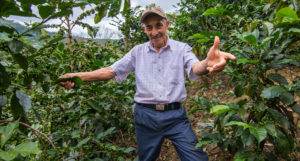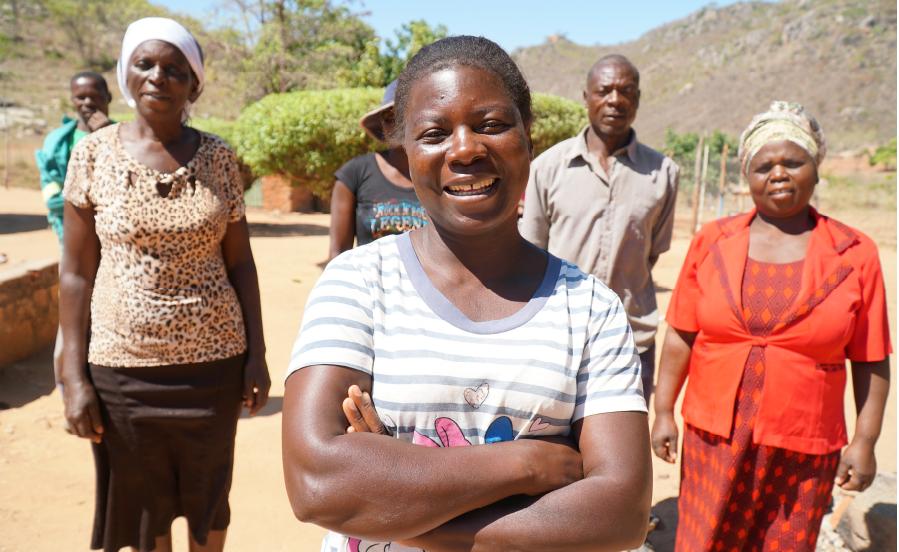Nationally Determined Contributions: What Are They and What Do They Mean for Countries on the Front Line of the Climate Crisis?
The world is preparing for the UN Climate Change Conference of the Parties (COP) in November. This year’s conference – COP26 – will be hosted in Glasgow and has been described by climate change experts as the most significant climate event since the 2015 Paris Agreement.
In the run up to COP26, there has been much talk of Nationally Determined Contributions (NDCs). In this article, we explore the history of the NDCs and their relevance for some of the countries we work in around the world.
Origin of the NDCs – The Paris Agreement
The 2016 Paris Agreement was a milestone in the fight against climate change. 196 countries met in Paris to agree on ways to slow greenhouse gas emissions and tackle climate change impacts. The resulting agreement became known as the Paris Agreement.
The principal goals of the Paris Agreement are to:
- Decrease greenhouse gas emissions
- Prevent global temperatures from rising more than 2°C above pre-industrial levels this century
- Keep temperatures from rising above 1.5°C.
Joining together to tackle climate change
For the goals laid out in the Paris Agreement to be achieved, every country needs to do its bit.
Every country is different, with varying circumstances, resources and abilities. For this reason, each country chose their own targets and contributions to the universal goal. These country targets are now known as NDCs.
Each country created a plan describing their contributions and how they plan to achieve them.
Most of the other country’s NDCs include a target to reduce CO2 emissions. For example, the UK has committed to reducing economy-wide greenhouse gas emissions by at least 68% by 2030, compared to 1990 levels.
Many NDC documents also highlight how the changing climate will affect their country, and how they plan to adapt to these changes.
Taken as a whole, the NDCs add up to a global commitment towards meeting the aims of the Paris Agreement.
Nepal: on the front line of climate change
Nepal is one of the most climate-vulnerable countries in the world. This is because of the country’s extreme terrain and the fact that many people there are reliant on farming to make a living.
Nepal is committed to tackling climate change with the Paris Agreement, despite the fact that the country has done little to contribute to it. In part, this is because limiting global average temperature rise to 1.5°C would significantly lower risks for the country.
In its NDC, the government of Nepal has laid out its plan for socio-economic prosperity by building a climate-resilient society. It aims to achieve net-zero greenhouse gas emission by 2050. Sunil Acharya, a climate and resilience expert in our Nepal team, explains more:
“Nepal’s second NDC, submitted in December 2020, commits to strengthen climate action. It plans to reduce the fossil fuel dependency and increase the share of clean energy to the energy mix, with a focus on expanding access to energy and clean cooking solutions.
“The NDC also aims to prepare and implement climate resilient and gender-responsive adaptation plans in all the local governments level. Furthermore, the NDC pledges to establish multi-hazard monitoring and early warning system covering all the provinces.”
Our work in Nepal supports many of the government’s aims. For example, we’re working with farmers in remote, mountainous regions to harness solar energy to irrigate their crops. It means people are able to grow enough food to feed their families, with extra cash crops to sell.

Chaha is using sustainable solar power to irrigate the crops on her Nepal farm and grow nutritious vegetables for her family
Peru: protecting the cloud forests
In Peru, deforestation is both a threat to the environment and to the smallholder farmers who rely on natural resources for their food and livelihood.
Peru was particularly hard hit by COVID-19, with one of the highest per capita fatality rates in the world and highest infection rates in South America. With this in mind, the goal of Peru’s NDC is to implement mitigation and adaptation measures in line with national goals for economic development and poverty reduction.
Peru is currently revising its NDC target, but has already announced it will move from a 30% to a 35% reduction of total emissions in its next NDC, while also aiming for carbon neutrality by 2050.
Working together with farmers in Peru, we’re replanting trees in the country’s cloud forests. More trees don’t just mean lower carbon emissions – they also mean better protection from floods and landslides and improved soil fertility. All of which means that farmers can grow more crops, more sustainably, while protecting themselves from extreme weather events like floods.

Genaro is replanting trees on his Peru farm, protecting his family and land from flooding and conserving natural resources
Our work in Peru has had nationwide impact, as our head of climate and resilience, Colin McQuistian, explains:
“We’ve been working on flood early warning systems in Peru, Bangladesh and Nepal for many years and after seeing our success and recognising the need to meet the Paris Agreement targets, the national government of Peru have committed $13m to establish and expand early warning systems across the country. This is exactly the sort of ambitious action we want to see.”
The NDCs have never been more relevant
A 2020 report produced by the United Nations Environment Programme suggested that if all countries met their current NDC targets, we would still only be one third of the way towards achieving the Paris Agreement. In addition, many countries aren’t currently close to reaching their NDC targets.
However, public awareness around the importance of tackling climate change has skyrocketed over the last few years. Governments are starting to take notice, with the governments of 77 countries now pledging to go carbon neutral by 2050.
The countdown to COP-26
Our climate experts are planning how we can best use our position as admitted observer at COP-26 to amplify the voices of the communities we work with. Climate change disproportionately impacts the most vulnerable people in the least developed countries. That’s why it’s so important to us that we join with them to call for strong and urgent action to address the needs of those struggling to adapt to climate change. Sunil Acharya explains:
“Nepal is committed to uphold the objectives of the Paris Agreement but will require financial, technological and capacity building support from developed countries to fulfil the commitments.”
Follow our journey to COP26 and beyond on LinkedIn and Twitter. By following our journey, you’ll also learn more about our work around the world, helping people living on the front line of the climate crisis adapt and succeed.
Find out more

Join us at events around the world
We will continue to build on the momentum for change amongst global leaders and the public at international events that address man-made climate change, loss of biodiversity and inequality.
View events